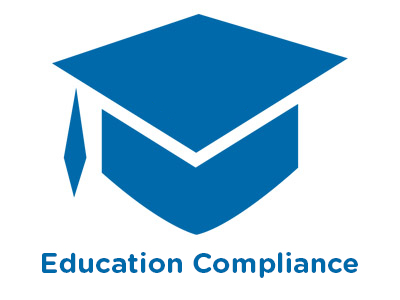 |
Data Security Training |
1.00 |
Data hacks in higher education are the second-highest category of reported industry breaches, accounting for 17 percent of all reported hacks. Resolving data hacks is expensive, costing anywhere from hundreds of thousands to millions of dollars. Understanding how to maintain data security is key to preventing hacks and keeping sensitive data private. |
 |
Deaf-Blindness and Communication for Paraprofessionals |
1.00 |
This course covers Deaf-Blindness and Communication. It will help you develop new knowledge about deaf-blind students. You will learn what communication systems to use and strategies to implement in the classroom. It will also help you understand your role as a paraprofessional when working with a deaf-blind student. |
 |
Deaf-Blindness and Communication for Teachers |
1.00 |
This course covers Deaf-Blindness and Communication. It will help you develop new knowledge about deaf-blind students. You will learn what communication systems to use and strategies to implement in the classroom. It will also help you understand your role when working with a student who is deaf-blind. It is just one out of many teacher courses we offer. |
 |
Dementia and Oral Health |
1.00 |
Dementia is one of the main causes of disability among older adults. Alzheimer’s disease is the most common form of dementia. The oral health of patients with Alzheimer’s disease can be worse than that of those without dementia. Therefore, maintaining good oral health is an important and integral part of their general health. The purpose of this educational module is to provide an overview of oral health and the importance of oral care for patients with Alzheimer’s disease. |
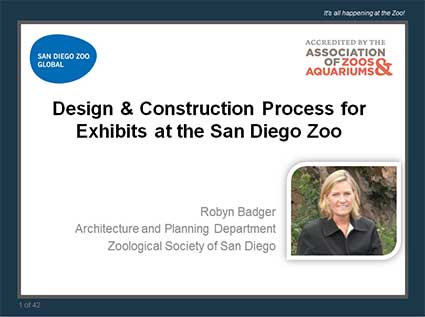 |
Design and Construction Process for Exhibits at the San Diego Zoo |
1.00 |
This webinar will walk you through the process from concept thru construction. You will understand how to read schematic documents and where to find information on construction documents to answer questions or feel more confident when interacting with design professionals or construction managers.
By the end of the course you should be familiar with the steps taken to complete a project. |
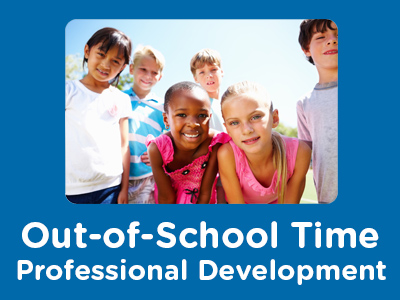 |
Designing Effective Indoor Play and Learning Environments for School-Age Programs |
2.00 |
Planning effective environments is the first step to planning an effective program. When environments are attractive, interesting, and comfortable, they provide a backdrop for a varied program that can address the developmental needs of school-age children. The look and feel of well-planned environments send messages that let children know they are welcome and valued. They are inviting and encourage children to get involved and stay engaged with program activities and experiences. |
 |
Designing Effective Interest Areas and Learning Environments for K-2 |
1.00 |
In order to operate an effective classroom environment, it is essential for school staff to know how to design, set up, and operate a variety of different interest areas that meet the developmental needs of students. When environments are attractive, interesting, and comfortable, they provide a backdrop for a classroom that can address the developmental needs of students. Effective interest areas are multi-dimensional; they provide a wide variety of activity options within the area. School staff in quality classrooms know how to work with colleagues and children to define, develop, and manage a wide variety of interest areas in a meaningful way. |
 |
Developing Activities That Encourage Creativity and Cognitive Development |
2.00 |
Children who regularly attend school-age programs need many opportunities to engage in activities that will help them develop their creative potential and apply their emerging thinking abilities and skills. To support children’s needs, it is essential for school-age staff to understand the creative process, and the relationship of cognitive development to creativity. With this knowledge and understanding, staff can design and implement a program that encourages a sense of wonder as children explore their environment, fosters creative imagination, and enhances children’s ability to apply reasoning skills appropriately as they develop ideas and encounter challenges, problems, and opportunities. |
 |
Developing Activities That Support Character Development and Promote Social Interaction |
2.00 |
School-age programs can provide children with many opportunities to work on character development. Staff who are knowledgeable about character development can create program experiences that help individual children bring out their best inner qualities as they interact with peers and adults outside the family. Staff can also use this knowledge to help children make positive contributions to the program, their school, their community, and to the world beyond their community. |
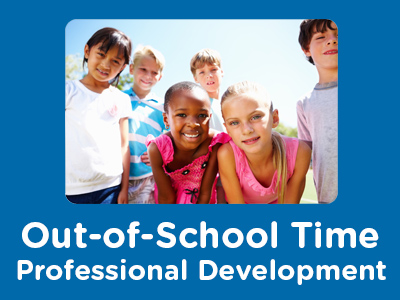 |
Developing and Implementing Effective Indoor Interest Areas |
2.00 |
In order to operate an effective school-age program environment, it is essential for staff to know how to design, set up, and operate a variety of different interest areas that meet the developmental needs of school-age children. Effective interest areas are multi-dimensional; they provide a wide variety of activity options within the area. Effective interest areas provide children with opportunities to work and play independently on their own or with others. They also provide a setting for focused, staff-led activities designed to introduce children to new concepts and skills. Staff in quality school-age programs know how to work with colleagues and children to define, develop, and manage a wide variety of interest areas. |
 |
Developing and Implementing Effective School-Age Outdoor Environments and Interest Areas |
2.00 |
School-age children need daily opportunities to exercise, relax, and participate in a wide range of outdoor activities. The hours children spend in after school programs are often the best hours of the day for getting fresh air and enjoying the out of doors while it is still daylight. School-age programs can provide safe, secure settings where children can enjoy the out of doors. Even if outdoor space is limited, regular participation in a wide variety of physical activities in the open air can help children develop healthy exercise habits that will last a lifetime. |
 |
Developing Children's Emergent Literacy Skills (CDA 2) |
2.00 |
Spark curiosity, and inspire imagination: Watch young minds blossom as they build pre-reading and writing skills! This course equips you with playful, effective approaches to foster essential emergent literacy skills, setting the stage for future reading and writing success. |
 |
Developing Effective Outdoor Environments and Interest Areas (Collection) |
2.00 |
School-age children need daily opportunities to exercise, relax, and participate in a wide range of outdoor activities. The hours children spend in after school programs are often the best hours of the day for getting fresh air and enjoying the out of doors while it is still daylight. School-age programs can provide safe, secure settings where children can enjoy the out of doors. Even if outdoor space is limited, regular participation in a wide variety of physical activities in the open air can help children develop healthy exercise habits that will last a lifetime. |
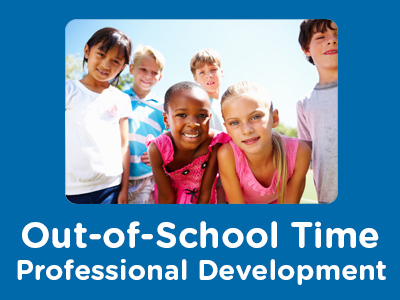 |
Developing Effective Outdoor Environments and Interest Areas: Assessing Space and Planning Activities |
1.00 |
School-age children need daily opportunities to exercise, relax, and participate in a wide range of outdoor activities. The hours children spend in after school programs are often the best hours of the day for getting fresh air and enjoying the outdoors while it's still daylight. School-age programs can provide safe, secure settings where children can enjoy the outdoors. In this course, we will explore how to assess space and plan activities in outdoor environment and interest areas. |
 |
Developing Effective Outdoor Environments and Interest Areas: Moving Indoor Interest Areas Outside |
1.00 |
School-age children need daily opportunities to exercise, relax, and participate in a wide range of outdoor activities. The hours children spend in after school programs are often the best hours of the day for getting fresh air and enjoying the outdoors while it's still daylight. School-age programs can provide safe, secure settings where children can enjoy the outdoors. In this course, we will explore strategies for moving indoor interest areas into outdoor environments. |
 |
Developing High Quality Inclusion Practices (CDA 8) |
2.00 |
Creating high-quality inclusive programs empowers children with disabilities to learn and thrive alongside their typically developing peers. However, knowledge and skill gaps often hinder educators in implementing effective inclusion practices. This session dives into the essence of inclusion in early childhood settings, fostering awareness and equipping you to start the inclusion conversation. Explore the core principles and best practices to cultivate truly inclusive learning environments for all children. |
 |
Developing Important and Successful Communications Skills (CDA 3) |
2.00 |
Unleash the communication superpowers of your young learners! This course equips you with age-appropriate tips to help infants, toddlers, preschoolers, and school-age children blossom. Watch their language and social-emotional skills soar as they confidently navigate transitions, engage in enriching play and learning, build meaningful relationships, and become empowered problem-solvers. |
 |
Developing Methods of Observation (CDA 7) |
2.00 |
Learning child observation skills can be a powerful tool for solving some of the most difficult problems faced by child care providers. Concerned about a child’s behavior? Want to know how to plan successful activities? Observation skills can help. Learn more about each child and his/her development using the methods of observation in this course. This course provides examples of good observation techniques and demonstrates skills necessary for useful observations. It covers CDA subject area 7: Observation and Assessment, and can also be taken as a stand-alone learning event or as part of a broader early childhood education curriculum. |
 |
Developing Your Professional Philosophy Statement (CDA 6) |
2.00 |
Crafting a professional philosophy statement offers you a powerful avenue to express your core beliefs and values in early childhood education, teaching, and learning. This valuable tool can serve you throughout your career, from job applications to pursuing certifications like the CDA (Child Development Associate) Credential or academic positions. Additionally, it acts as a personal compass, reaffirming the significant roles and responsibilities you wish to fulfill as an educator. |
 |
Development and Characteristics of Learners for Paraprofessionals |
1.00 |
This course walks you through each of the 13 disability categories identified by the IDEA. As one of many paraprofessional courses we offer, Development and Characteristics of Learners will assist you in fostering a solid understanding of your role as a paraprofessional. This course will also help you gain invaluable insight into the students you serve in your workplace. |
 |
Development and Characteristics of Learners for Teachers |
1.00 |
Development and Characteristics of Learners will assist you in fostering a solid understanding of how children develop and the disability categories that may impact their learning. This course will also help you gain invaluable insight into ways you can support children and meet their needs. |
 |
Developmental Trends 101 |
2.00 |
In order to provide developmentally appropriate programming, it's important to understand how children and youth develop physically, emotionally, and cognitively. This course will provide information about the developmental trends that are associated with different age-groups (K-8) and how these trends relate to day-to-day programming. |
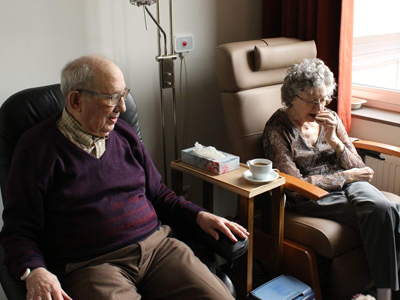 |
Differential Diagnosis of Dementia |
1.00 |
At the end of this course, you will be able to:
Define Alzheimer's disease, and identify its risk factors.
Examine the differences between Alzheimer's disease and dementia.
Explore the pathology and the clinical presentation of Alzheimer’s disease, frontotemporal dementia and dementia with Lewy bodies.
Examine the diagnostic tests and tools used in the diagnosis of dementia. |
 |
Differentiating Dyspnea |
1.00 |
|
 |
Digital Media Literacy |
1.50 |
In this course, you will learn about judging online information, understanding and interpreting the media, and society's relationship with social media and smartphones. |


























